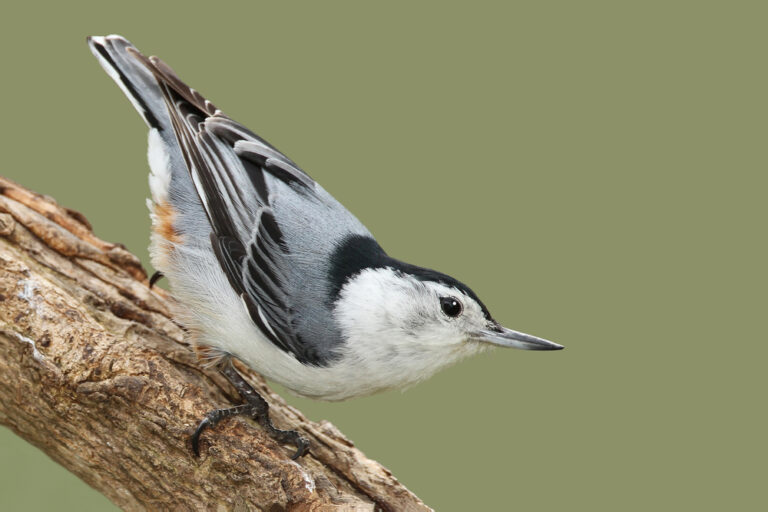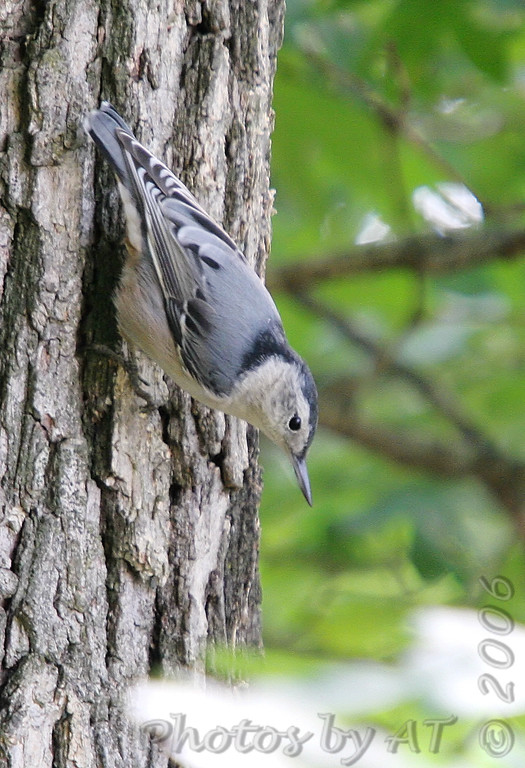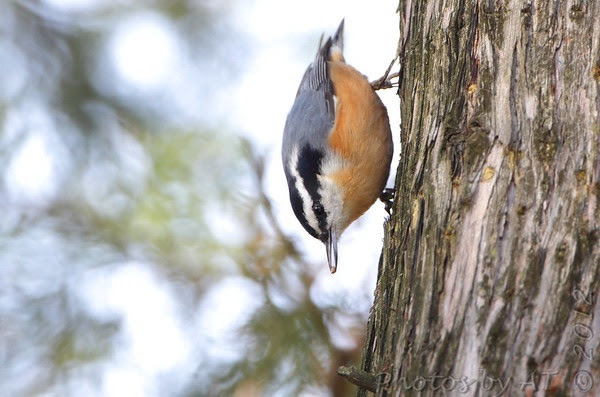
White-breasted Nuthatch, Sitta carolinensis
Bill Rowe
Of the birds that we think of as being year-round residents, some actually indulge in a lot of movement, migrating in or out, shifting their winter roosting grounds, or otherwise being unpredictable—like the American Robin or Red-winged Blackbird. In these cases, we don’t know which individual birds may be staying here all year. But some species do seem to be genuine permanent residents, i.e., they give us no reason to doubt that the same individuals stick around in the same locations all year. One of these is the modest little White-breasted Nuthatch, always with us for virtually any walk in any woods at any time, but more obvious in winter, when the leaves are gone and the nuthatch’s simple ank-ank calls resonate more loudly. Its job is to explore all over the bark of every tree, traveling up, down, and sideways, and probing or even chipping the bark for all manner of small insect life, be it adults or larvae. In winter, with insects harder to find, the diet changes to include a lot of seed, some of it probably from nearby fields; this also attracts nuthatches to our feeders, where the pickings are so easy. Worldwide, there are 29 species of nuthatch, all in the genus Sitta, with four in North America. The White-breasted, however, has a continent-wide range with three distinct populations—Eastern, Western (mountains), and Pacific Coast—that have different calls and slight differences in appearance. Some researchers consider them to be possibly three species.
IDENTIFICATION: The White-breasted Nuthatch is not much like any other bird, with its white face, stubby tail, and chisel-bill—although chickadees and titmice also qualify as “small gray woodland birds,” perhaps confusable with a very poor look. Migration and winter often bring in some Red-breasted Nuthatches from the north; they are smaller, with orangey underparts and a striped head pattern. The White-breasted’s nasal call notes (see above) are augmented in late winter and spring by its song, a rapid series of 6-8 syllables, something like way-way-way-way…. Being familiar with these sounds will find you a lot more nuthatches!
ST. LOUIS STATUS: A common permanent resident in all forests, woodlots, and well-wooded suburbs.
Learn more and listen to the songs and calls of White-breasted Nuthatches here.


Female: note cap is gray, not black.
Photo Credit: Al Smith
Red-breasted Nuthatch for comparison
Photo Credit: Al Smith




